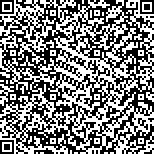| This article has been:Browse 2136Times Download 4193Times |

scan it! |
|
|
| DOI:10.13522/j.cnki.ggps.20180143 |
|
| Identifying the Sources of Errors in Using DEM to Extract Irrigation-drainage Network in Plain Areas Using AGREE and BURN-IN Algorithm |
|
ZHENG Qian, SHI Haibin, LI Xianyue, LI He, BU Huailiang, LI Zhengzhong
|
|
1.College of Water Conservation and Civil Engineering, Inner Mongolia Agricultural University, Huhhot 010018, China; 2.Shahao Canal Experimental Station, Hangjinhouqi, Bayannaoer City, Inner Mongolia, Bayannur 015000, China
|
| Abstract: |
| 【Objective】 The digital elevation model (DEM) has been widely used to map irrigation network but its application in irrigation district in plain region is problematic, characterized by network discontinuity, parallel channel and failure and missing end branches. This could have a consequence for the hydrological analysis. This paper analyzes the source of the errors.【Method】 The network was extracted by the Agree and the Burn-in algorithm, we analyzed the relationship between the characteristics with ground surface elevation and DEM factors. 【Result】The sources of the errors in extracting channel network in plain regions are the discrete error of the DEM, inaccuracy of grid cell values, resolution of grid images, and the assumption of no surface water percolation. 【Conclusion】 For channel network in plain with slope angle of 0°~10°, there was limited surface runoff and it thus cannot used to extract the channel network. The solution is to improve the resolution of the grid cells and recalculate the channel fracture part of the grid recalculation. Among them, the method improving grid pixel precision successfully solved the problem of digital river channel fracture under the Agree algorithm and Burn-in algorithm in the plain irrigation area. Although the grid recalculation of the main channel fracture part has successfully extracted some of the original fault channels, partially generated, failed to solve fundamentally. Therefore, this paper advocates that scholars can combine the two methods and ideas as a solution to the problem of extraction of digital river network in similar plain irrigation areas. |
| Key words: Algorithm of Agree; Algorithm of Burn-in; DEM; irrigation area |
|
|